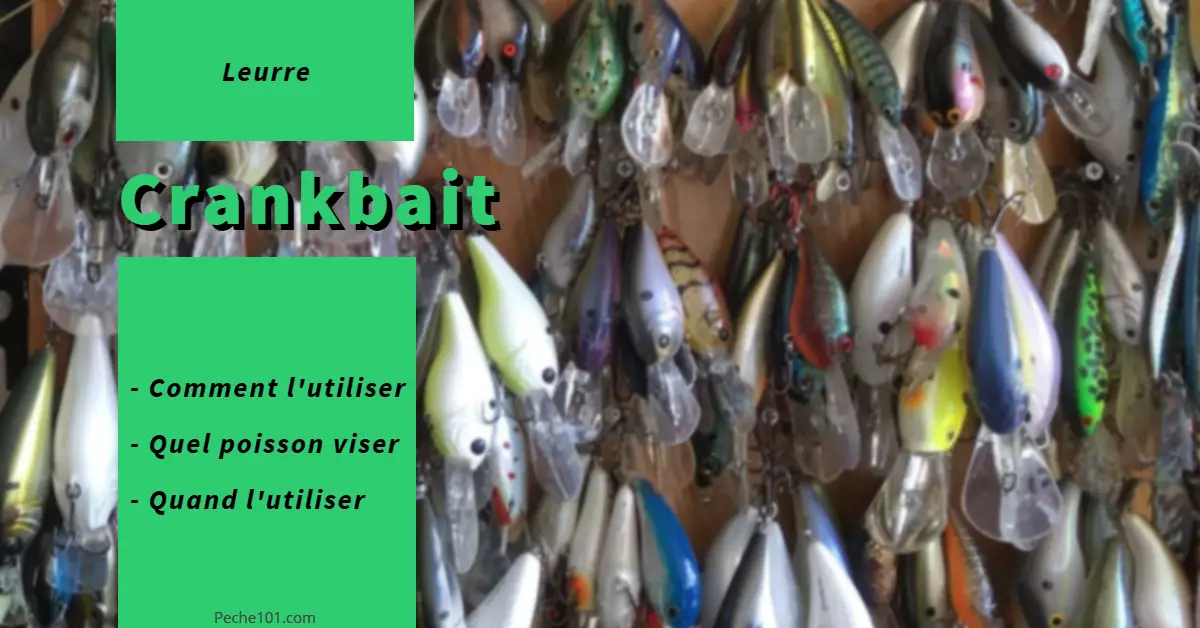The crankbait is a popular lure type and effective for catching many types of freshwater fish.
In fact, it is the type of lure to have won the more victories in Bassmaster tournaments.
Crankbaits are designed with different lip shapes and sizes, allowing you to target fish at different depths and conditions.
Here is a brief description of the different types of crankbaits and how to use them.
Article content
Crankbait with square lip
The square bib crankbait is specifically designed for fishing in shallow water, from 2′ to 5′.
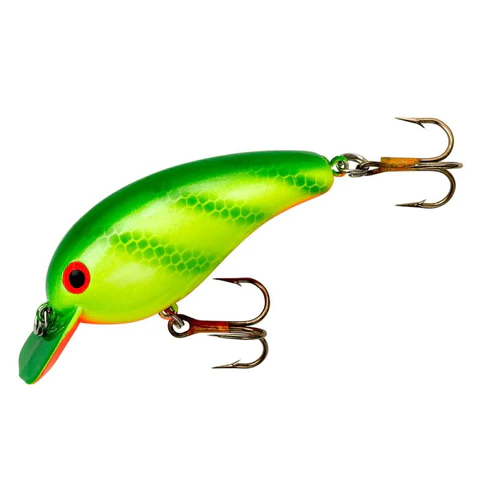
Its square lip allows it to bounce off obstacles, reducing the risk of snagging.
It's perfect for exploring rocky areas and submerged structures.
Round bib crankbait
With a round lip, this crankbait can dive to varying depths, from 2′ to 30′.
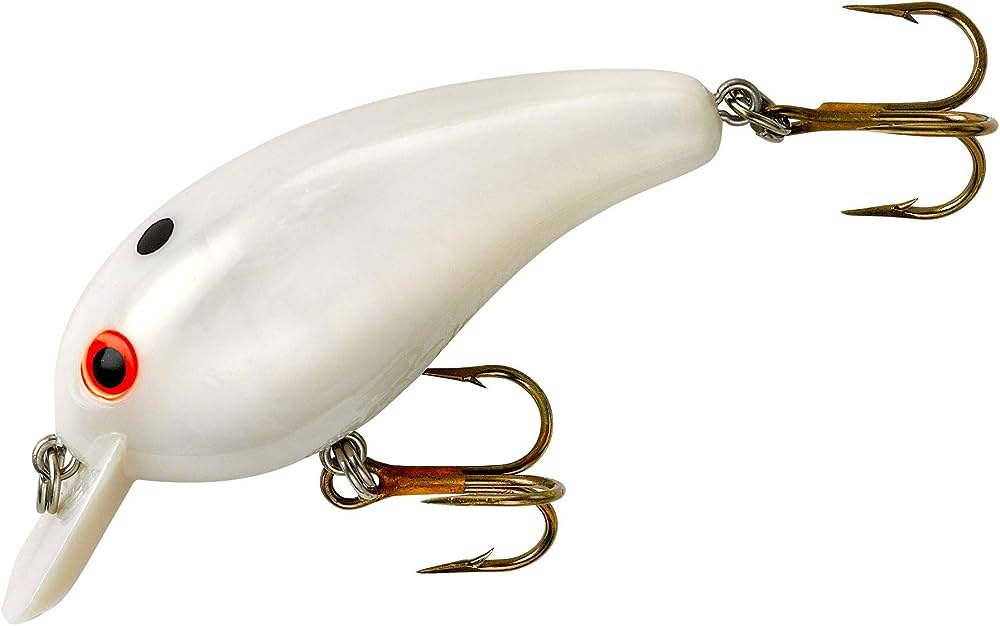
It is excellent for probing different water layers and detecting where fish are hiding.
The size and angle of the lip determine the depth to which it can descend.
Crankbait without lip
The bibless crankbait is designed for deep diving, between 10′ and 40′.
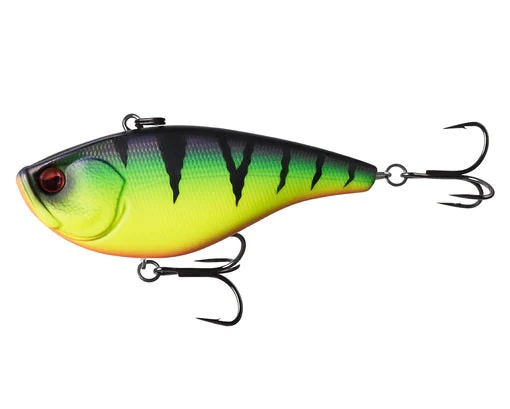
Without the resistance of a bib, it can quickly reach deep areas where predatory fish are found.
Ideal for deep-water fishing.
Shallow diving crankbait
This type is suitable for shallow waters, between 2′ and 5′, with a small lip limiting its diving depth.
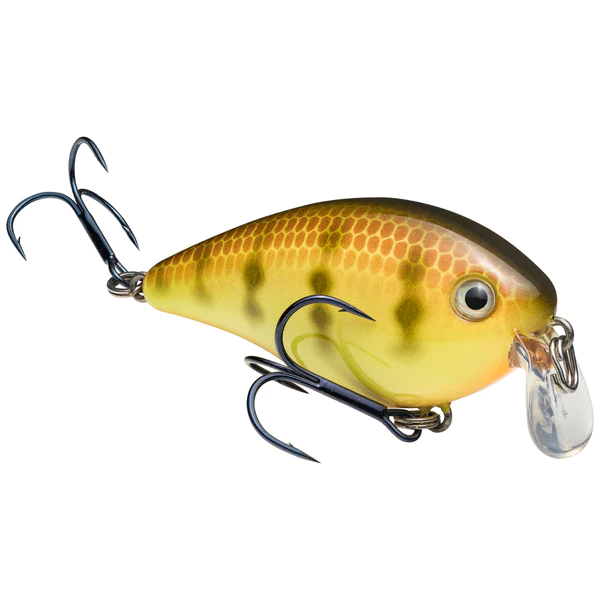
Perfect for areas where fish feed close to the surface, such as flats or grassy areas.
Medium diving crankbait
With a medium-sized lip, this crankbait can explore a range of intermediate depths, from 5′ to 15′.
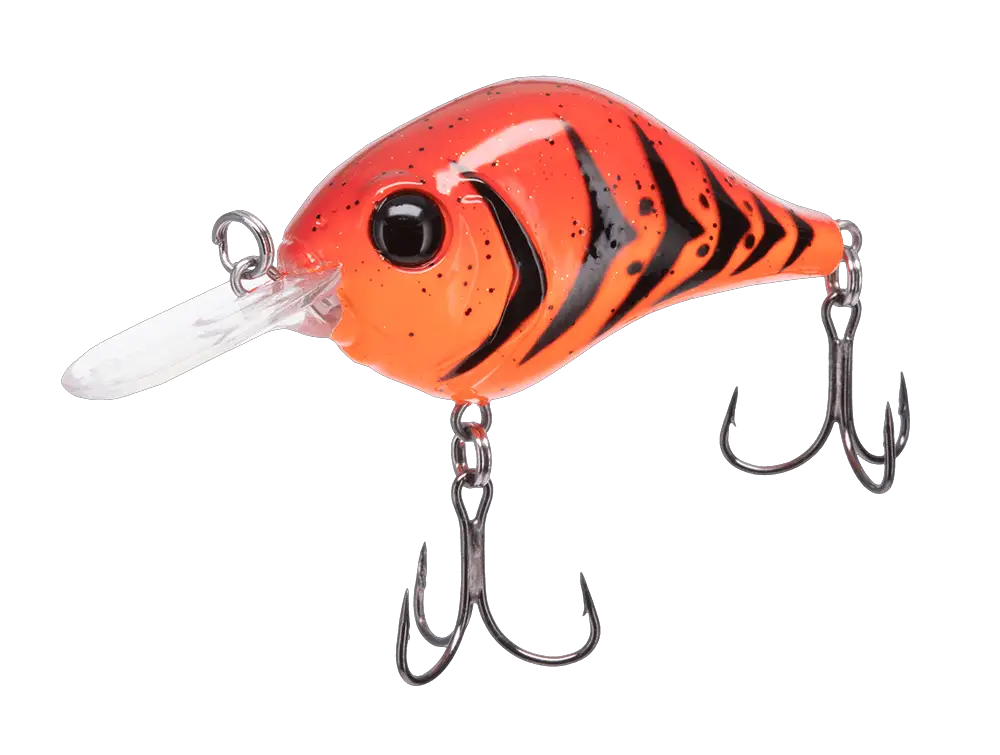
It offers versatility and can be used in a variety of fishing situations, such as gentle slopes and lake contours.
Deep-diving crankbait
This crankbait dives deep, between 12′ and 30′, thanks to its large lip.
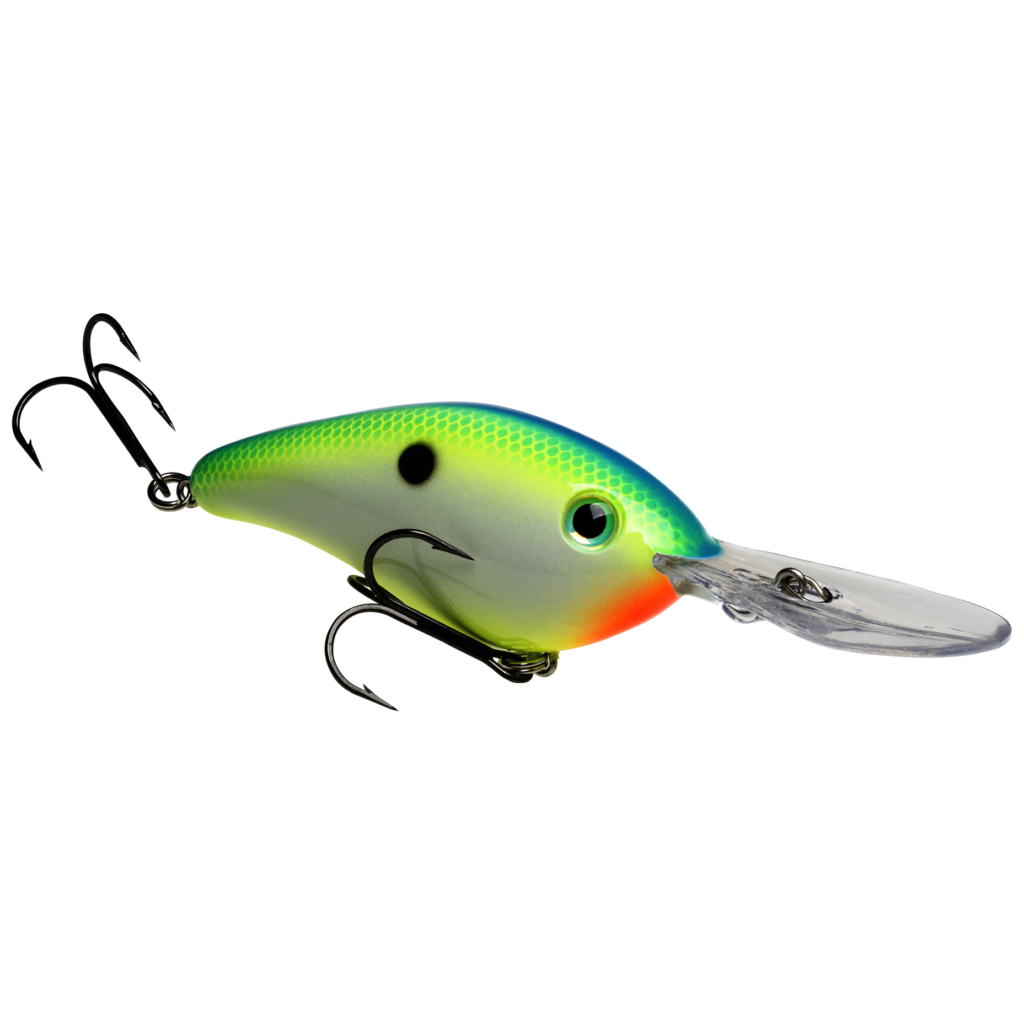
It is popular for fishing in deep lakes where big fish often hide.
It allows you to reach areas inaccessible with other types of crankbaits.
Table of crankbait types and depths
Here's a table summarizing the different types of crankbaits, their lip shape, size and diving depth in feet.
| Crankbait type | Lip shape & size | Diving depth (feet) |
|---|---|---|
| Crankbait with square lip | Square bib | 2′ à 5′ |
| Round bib crankbait | Round bib | 2′ to 30′ (depending on bib size and angle) |
| Crankbait without lip | No bib | 10′ à 40′ |
| Shallow diving crankbait | Small bib | 2′ à 5′ |
| Medium diving crankbait | Medium bib | 5′ à 15′ |
| Deep-diving crankbait | Large bib | 12′ à 30′ |
Choice of crankbait colors
Choosing the right crankbait color can make all the difference between a successful fishing day and an unsuccessful outing.
Crankbait colors play a crucial role in attracting the attention of fish in different conditions.
Crankbait colors for clear waters
When visibility is high, fish can see far ahead and watch your crankbait as it moves through the water column.
In clear water, the aim is to mimic fish food as closely as possible.
Here are some recommended colors for clear water:
- Ghost Shad Ideal for super-clear waters, the Ghost Shad's translucency attracts the attention of fish without frightening them. It's the perfect minnow emulator.
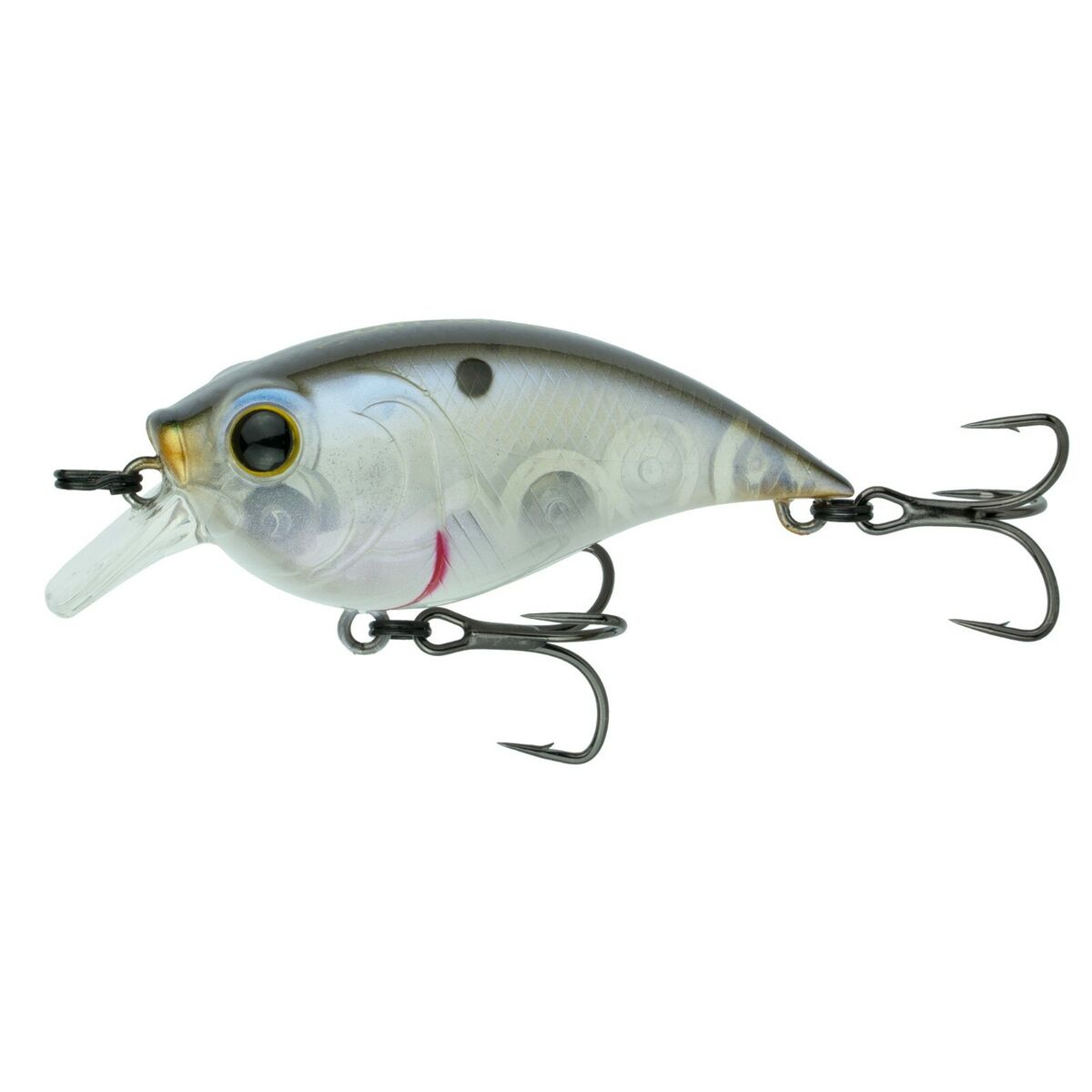
- Sexy Shad : In lightly tinted water, the Sexy Shad is very effective. It has a nice minnow appearance with a touch of chartreuse to make it stand out.

- Natural Bluegill When bass feed on sunfish, imitate them. Lures imitating sunfish are particularly effective in northern lakes where sunfish are a main food species.
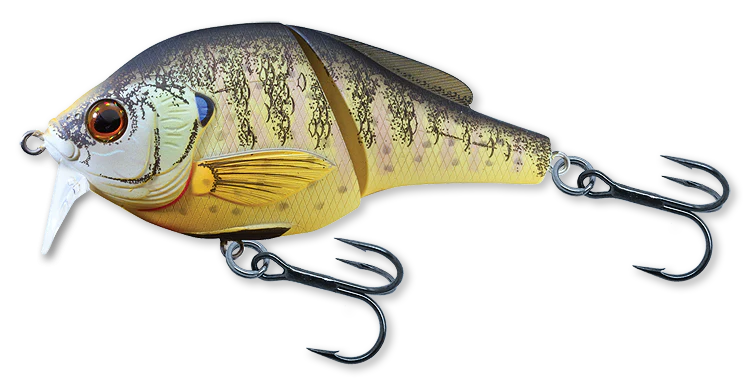
- Natural Crawfish : As bass feed on crayfish, it makes sense to use a crankbait that resembles one. Crayfish colors are also effective in tinted water.
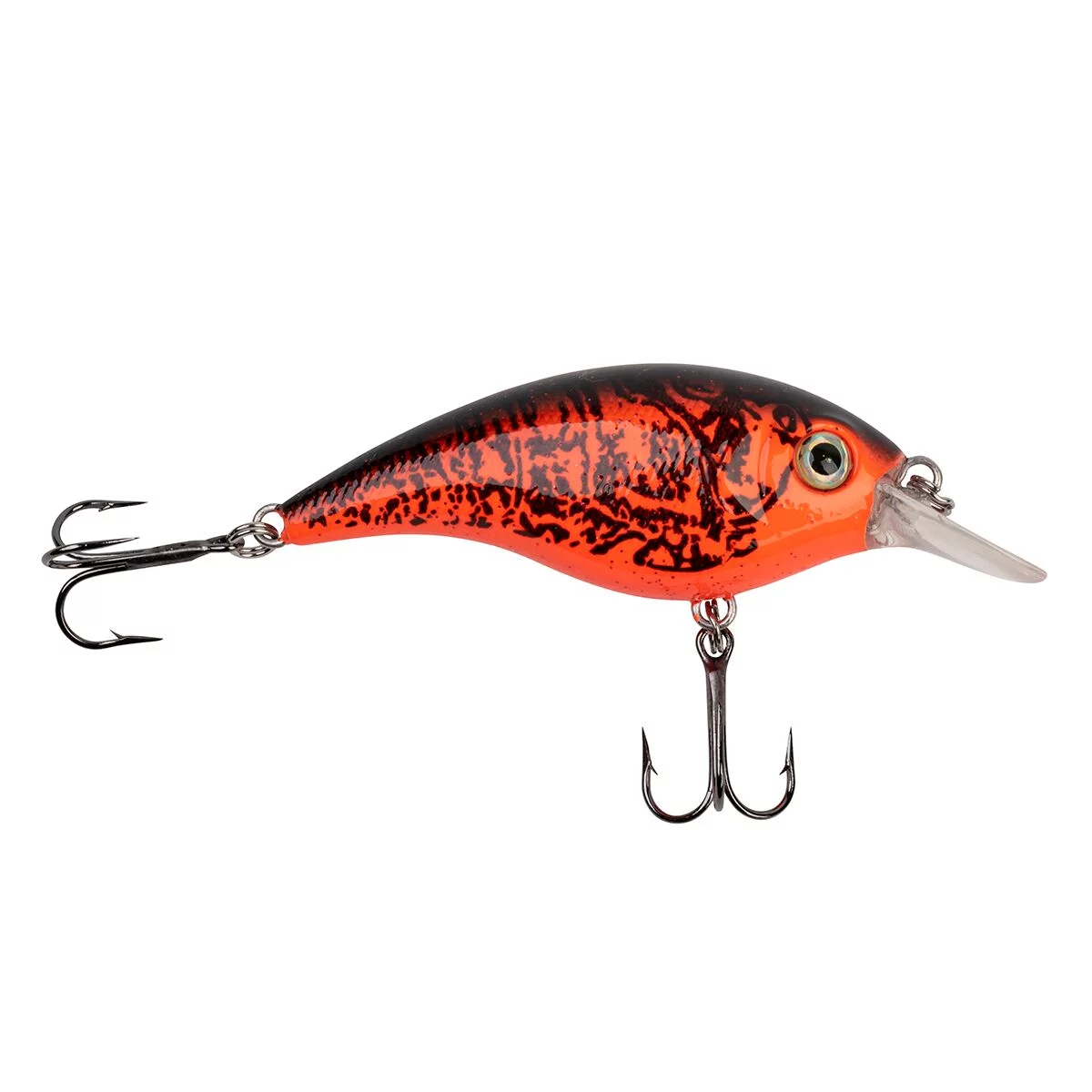
Crankbait colors for tinted or turbid waters
When visibility decreases, it's important to use bright, contrasting colors to attract the fish's attention.
Here are some recommended colors for tinted or cloudy water:
- Chartreuse/Blue Back A classic for tinted waters, the Chartreuse/Blue Back is highly effective in attracting the attention of fish.
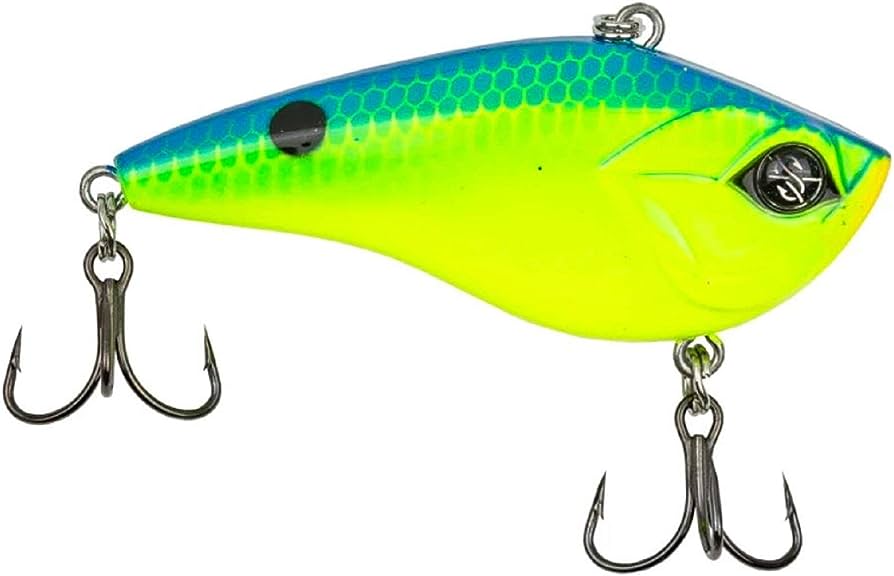
- Citrus Shad : On tinted lakes and rivers, the Citrus Shad is very successful. It has a white underbelly and sides that change from chartreuse to blue on the back.
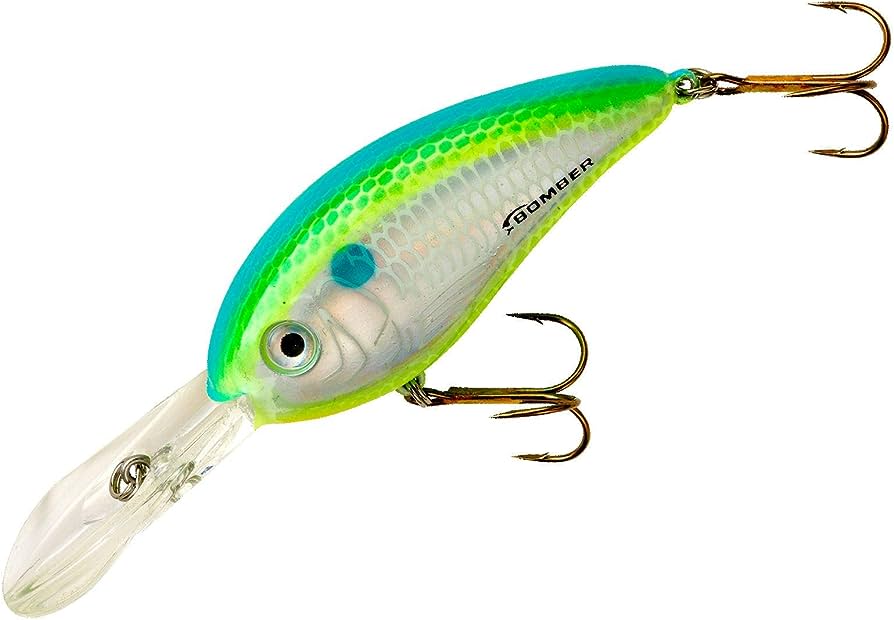
- Homer An old-fashioned color that was very successful in the 1980s and 1990s. It works well with chartreuse sides, a blue back and a bright belly.
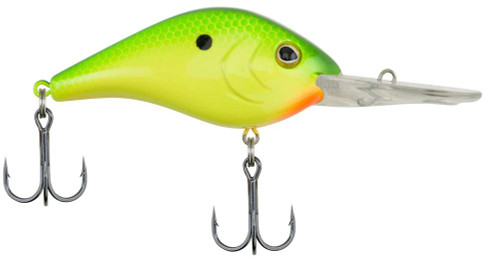
- Fire Tiger In the dirtiest waters, Fire Tiger is very effective. Its high contrast attracts fish from afar.
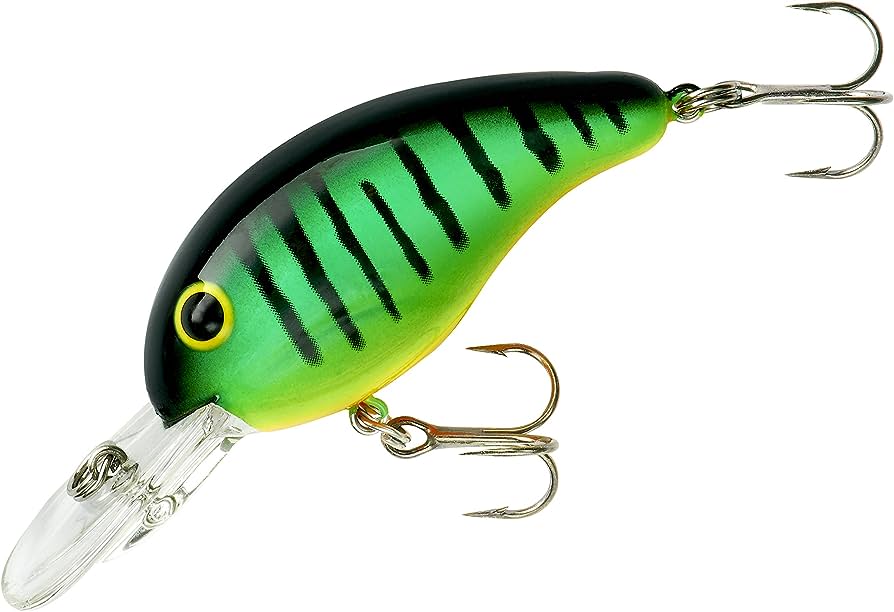
Crankbait colors according to water visibility
- Troubled Waters (less than 60 cm visibility): Opt for bright colors such as vivid chartreuse or dark red.
- Tinted Waters (60 cm to 1.20 m visibility): Use colors that are more opaque and closer to the natural colors of minnows.
- Eaux Claires (over 1.20 m visibility) : Opt for translucent or chrome colors that attract light slightly.
Fish to target with a crankbait
Crankbaits can catch most predators. Here is a list of the most common fish caught with this type of lure.
- Bass (Black perch, Blackbass) Crankbaits are effective all year round, using different types depending on conditions.
- Crapet-Soleil (Crappie) Small Crankbaits work well in shallow water in autumn and winter.
- Pike : Use Crankbaits imitating baitfish, preferably in darker waters.
- Walleye (Pike-perch) Choose crankbaits in natural colors, fishing above or below the fish.
- Trout Crankbaits attract larger specimens, requiring specific retraction.
All in all, crankbaits offer a wide range of options for targeting a variety of fish. fish species at different depths and under different conditions.
Choosing the right type for the situation can greatly increase your chances of success on the water.
We hope you'll find this guide to the different types of crankbait useful for your next outing!
Happy fishing!
